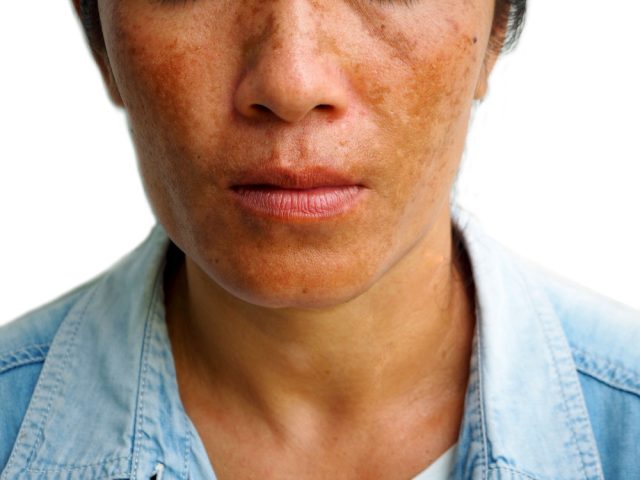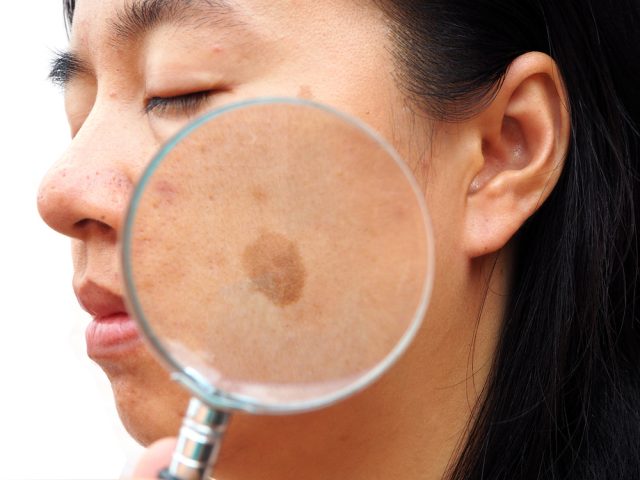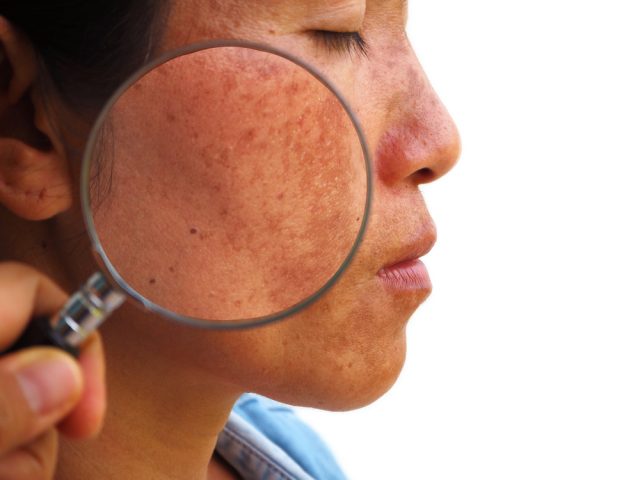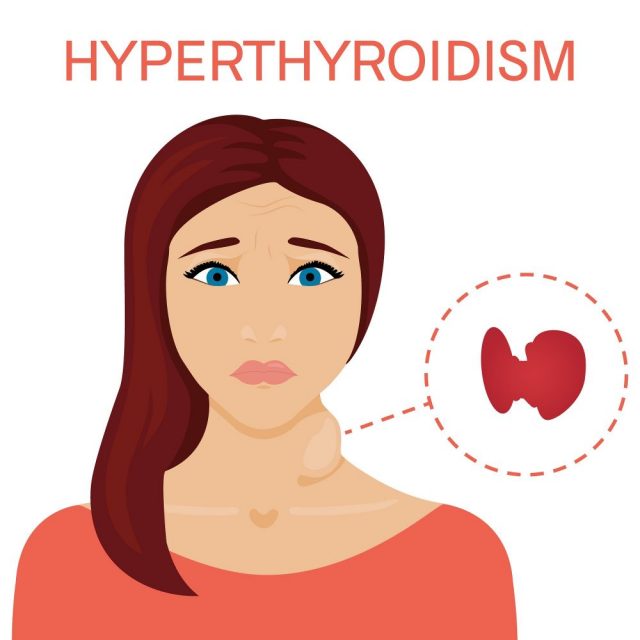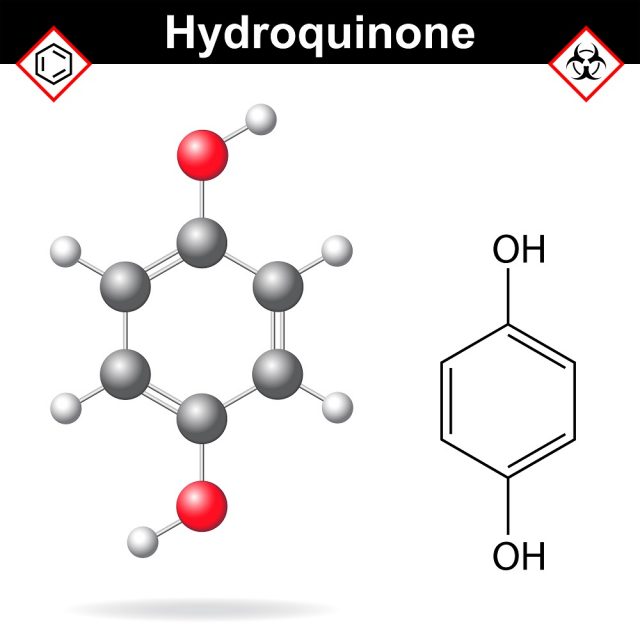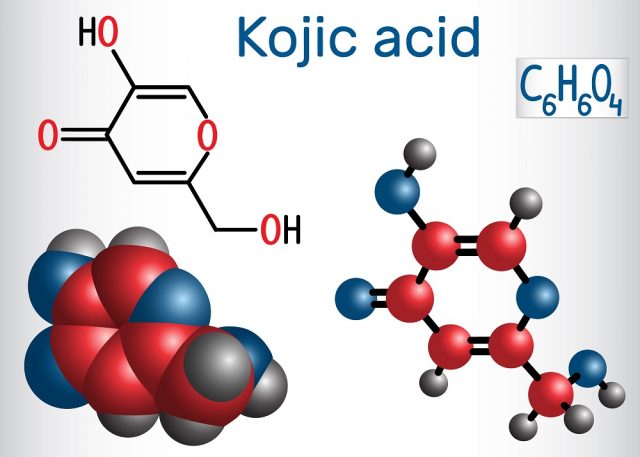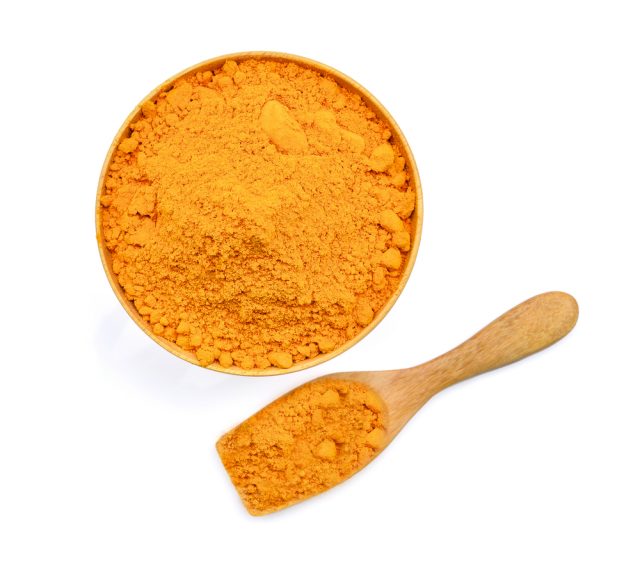Melasma: Causes, Symptoms and Treatments
Melasma is commonly known as chloasma or pregnancy mask. It can be identified as discoloration or hyperpigmentation of the skin, especially face. The patches caused by melasma are usually darker as compared to normal skin color and they are symmetrical on both sides of the face. Few other parts of the body that stay exposed to the sun are also affected by melasma. Most of the patients’ report colored patches on chin, nose bridge, forehead and cheeks; however, some patients also suffer the same issue in forearms and neck as well. Although this skin discoloration does not cause any considerable physical harm, it has a major effect on the self-confidence of the person as they start feeling conscious about their appearance.
It is observed that melasma grows slowly and the clearance also takes much time. This chronic skin disease has its own impact on the different type of skin. Depending upon the sensitivity of particular skin towards applied treatment and kind of therapy used, the skin infection may take some time to recover. When patients do not avoid direct contact with sunlight with affected skin area, the treatment naturally takes much time to produce results and the infection may return within few years.
These pregnancy masks are observed in the age group of 20 to 50 years and they are characterized by tan, brown and blue-grey color. Although most of these cases are reported due to repeated and overexposure to sunlight, some genetic predisposition changes and hormonal variations can also cause this infection. This disease infection can affect males as well as females. The distribution pattern of melasma is of three types in general:
- Its 63% occurrence is observed around chin area and nose.
- 21% is seen on the nose and cheeks.
- Remaining 16% is found around lower jaw.
This disease is common among people with darker skin tones as well as light brown skin. Such skin types are highly affected by solar ultraviolet radiation. Note that people living in the South East Asian, East Asian and Hispanic regions are commonly affected by Melasma. Some studies show that ratio of melasma infections in women and men varies between 9:1 and this disease rarely affected before puberty. The most cases are reported when females reach reproductive age. As it affects almost 80% of pregnant ladies, the other name for melasma is Mask of Pregnancy.
Types of Melasma
There are generally three common types if chloasma that primarily affects the facial skin. They are Mandibular (Jawbone), Centro-facial (Central part of the face) and Malar (Cheekbones). Medical health experts reveal that most of the cases of melasma fall in the centro-facial category. In some cases, it can also spread to other parts of the face such as the nose, chin, upper lip, and cheeks as well. On the other side, the malar type melasma has a major impact on upper cheeks and the mandibular affects jaw. You will not observe signs of melasma on the upper side of the neck, but it can easily spread to forearms. Some studies reveal that people who undergo progesterone treatment are often affected by melasma on their forearms.
Chloasma follows four different pigmentation patterns; they are Mixed Melasma, Epidermal Melasma, Dermal Melasma and one unnamed pattern that is commonly observed on the dark-skinned people. Out of these four, epidermal chloasma cases are on the rise and it is commonly identified as the presence of a higher range of melanin in the superficial layer of skin. If we talk about dermal melasma, it is caused by the presence of melanophages, cells that attack melanin in skin layers and ingest them. The mixed melasma happens due to a combination of epidermal and dermal melasma infections whereas the fourth, unknown one is reported due to development of excess melanocytes in skin layers.
Symptoms of Melasma
The most commonly observed symptoms of melasma include patches of discoloration on skin layer. Note that these patches are darker as compared to the normal skin color. These masks commonly affect the facial skin in a symmetrical pattern and you can notice matching patches on both sides of the face. The regular patterns often occur on the chin, upper lip, nose, cheeks, and forehead. In some cases, melasma could be also restricted to cheeks and nose or to the jaw region. The symptoms can be different for different types of melasma:
- Epidermal Melasma: This type of melasma occur with dark brown, well-demarcated border; however, the good news is that it responds to treatment fast. It appears distinct under UV light.
- Dermal Melasma: It can be identified with ill-defined border, bluish tinge, and light brown appearance. This type of melasma appears unchanged in the UV light and its response to treatment is very poor.
- Mixed Melasma: As per medical health studies, this is the most commonly reported type of melasma. It includes dark, light and bluish patches on the skin Under UV light, this melasma shows a mixed pattern and it has partial response towards treatment.
Causes of Melasma
The causes of melasma are not completely identified but studies reveal that it often targets dark-skinned people. However, few common causes of melasma are listed below:
- Over and repeated exposure to sunlight.

- It can occur at the time of pregnancy but fades naturally after a few months of delivery.
- The hormone treatments that are complete by using oral contraceptive pills containing progesterone and estrogen levels can cause melasma.
- Hormone replacement, implants, and intrauterine devices can cause these skin patches.
- Some deodorant and scented soaps also cause melasma.
- Few cosmetics and toiletries are also the root cause of melasma and they can even persist for a longer
- Phototoxic reactions to few medications can also affect skin health to cause melasma symptoms.
- Melasma disorder is also caused by hyperthyroidism.

- Stress can also give rise to melasma symptoms.
Diagnosis of Melasma
The basic diagnosis of melasma often includes a visual exam of the affected area. If you suffer melasma symptoms, it is good to consult your trustworthy medical healthcare professionals so that he can judge the skin health and recommend some treatment.
One of the most commonly used diagnostic technique for melasma is Wood’s Lamp Examination. In order to recognize dark masks in the affected skin area, this special type of lamp is brought close to the skin. With this light, the healthcare professional makes efforts to analyze the level of fungal and bacterial infection while identifying how many layers of skin are actually affected by melasma. In order to test the seriousness of this diseases, some professionals may also prefer to use biopsy. This process is completed by removing a smaller portion of the affected skin area that is further used for testing.
Treatment of Melasma
One of the most commonly recommended treatments for melasma includes 2% hydroquinone (HQ) creams that are available in form of Porcelana and Esoterica. The prescription strength medications such as NeoCutis Blanche, Obagi Clear, and 4% hydroquinone are also impactful for this treatment. Few sunscreens are also useful for melasma that contains 4% hydroquinone as like Obagi’sSunfader sunscreen and Glytone Clarifying Skin Bleaching Sunvanish SFP 23. Note that, it is important to consult physicians before using products having HQ concentrations higher than 2%. Generally, creams that have HQ content below 2% are effective enough for skin lightening and they are recommended more because of their ability to treat the skin without causing much irritation. The creams are to be applied on the dark patches of skin at least two times a day and if you are moving out, it is better to apply sunscreen containing 2% HQ above cream.
You will be happy to hear that treatments are available for all types of melasma, but the only trouble is that epidermal melasma shows lower response rate towards treatment. There are chances that melasma patches can become completely clear without any appropriate treatment. However, the results are more positive if you are able to avoid direct sunlight or prefer to use good quality sunscreen. In case of pregnant ladies, the discoloration of the skin may naturally disappear after pregnancy or when the hormone therapy and birth control pills are discontinued.
When the condition becomes worse; experts recommend using a combination of creams such as kojic acid, nonphenolic bleaching agents, retinoic acid, azelaic acid, phenolic hypo pigmentating agent, and hydroquinone. In other severe cases of chloasma, professionals also recommend creams having a higher concentration of HQ and ingredients such as glycolic acid, corticosteroids, and tretinoin.
Possible Side effects of treatments
Some people also report side effects of melasma treatment creams; the most commonly observed is temporary skin irritation. People that keep on using HQ treatment with very high HQ concentration for a longer run may develop some serious side effects such as exogenous ochronosis. With this side effect, the skin becomes darker with the use of bleaching agent. Experts reveal that HQ induced ochronosis is a permanent kind of skin discoloration that often happens due to use of creams with HQ concentration above 4%.
Earlier, ochronosis was commonly found in people living in the United States but now it has also started showing the impact on other areas like Africa where creams with HQ concentration higher than 10% to 20% are used for the treatment of melasma. But, beyond all these side effects, HQ is the most commonly used treatment for melasma throughout the world. Make sure you discontinue usage of HQ if the signs of ochronosis become visible on the skin surface.
Home Remedies for Melasma
You will be happy to know that it is also possible to treat melasma with home-based remedies as well. This option is really good because you need not worry about side effects. Some of these potential treatments are discussed as below:
- Lemon Juice:
Lemon juice is considered as a common skin lightener that has superior astringent properties. The acidic nature of this juice is capable enough to remove the outer darker skin layer so that the hyperpigmented part of skin can be detached. In order to apply this treatment, all that you need to do is extract some fresh lemon juice and apply it to darker patches of your skin. Gently rub the area for two minutes and then let it stay there for at least 20 minutes. Now you can rinse the skin surface using lukewarm water. Prefer to use this remedy two times a day to avail fast improvement.
- Apple Cider Vinegar:
The acidic acid property of apple cider vinegar proves it one of the most effective and powerful bleaching agents among many competitors in the market. It can remove unwanted darker skin spots while leaving much smoother and radiant skin behind. Simply take few drops of apple cider vinegar and mix it with the same amount of water. now apply this solution on melasma spots. Let the area dry for few minutes and then clean it using lukewarm water. Follow these home-based melasma removal treatment for at least two times a day.
- Turmeric:
Many experts also prefer to recommend turmeric for the treatment of melasma due to its impressive antioxidant and the skin lighting abilities. Take five tablespoons of turmeric and mix it with 10 tablespoons of milk. It is advised to use whole milk to prepare this remedy due to its rich content of calcium and lactic acid that assists in skin softening and exfoliation. Now add 1 tablespoon of gram flour so that mixture can become thicker. Use this mixture on affected skin area and let it stay there for almost 20 minutes. After that, you can rinse it off using warm water and dry the area with a clean towel. In order to avail best results, prefer to use this treatment in routine.
- Aloe Vera Gel:
Aloe Vera gel contains mucilaginous polysaccharides that can initiate a fight against hyperpigmentation and helps to restore the original skin color. This home-based remedy is also effective enough to remove dead skin cells and can assist in regeneration of new cells. Collect some fresh aloe vera gel and apply it gently on the affected skin area. After 15 to 20 minutes, you can wash it with lukewarm water. To avail best results, follow this treatment for few weeks, at least two times a day.

